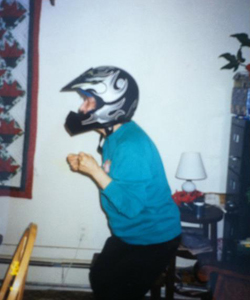December’s cover story by John Crompton focused on the evolving lifestyle and financial factors motivating today’s seniors toward recreation, and as I worked on editing this article and incorporating it into the rest of the magazine, it occurred to me that the seniors in my life have really found a wide range of ways to stay active and well. There are a bunch of stereotypes surrounding recreation for people of a certain age (water aerobics, anyone?), but the seniors I’ve known don’t fit that mold at all.
My great aunt Mary passed away last year at age 81, and until shortly before her death, I don’t think it ever occurred to her to consider age a reason to slow down or not do something she wanted to do. When she was about 60, I remember her trying to teach me how to “skin the cat” (grab a horizontal bar, lift your legs off the ground and do a backwards aerial somersault, flipping your legs between your head and the bar before landing back on the ground). She had recently undergone cancer treatments and didn’t have the strength she previously had, and I remember her being absolutely baffled that she wasn’t able to lift her feet off the ground. As a vibrant single living independently in Manhattan’s Upper West Side, she walked the 20 blocks to and from church multiple times a week and considered anything in that radius to be her “neighborhood” and therefore too close to bother taking the subway or a cab. Even into her 70s, I often had trouble keeping up with her.

Aunt Mary didn't let age stop her from being one of the most active people I knew.
My grandfather, on the other hand, had limited mobility and moved at a much slower pace, but in his way, he also made physical activity a priority even into his 90s. A former coal miner, Grandpa thought things like treadmills and cardio machines were “foolishness” (“If you want exercise, go dig a ditch”). However, he regularly tuned into the award-winning “Sit and Be Fit” chair exercise program on PBS, and I would frequently find him punching the air above his head and counting along with the instructor or doing stretches while seated in his favorite recliner. The program always made him smile and laugh, and he would get a real kick when my brothers and I would sit down next to him and twist, lift and lean along with the show. Beyond any physical benefits he got out of the exercises, it was clear that the program regularly gave a great boost to his mental well-being.
Both my Aunt Mary and grandfather made fitness work within their lifestyles, but I doubt either of them ever set foot in a recreation center or dedicated group exercise class. They had the time and interest to do so, but as far as I know, that connection was never made. As Crompton’s article makes clear, today’s senior population is growing, and they have the time, money, know-how and interest to join in on our programs and events, but we need to reach out to them to make that connection. In a time when declining health and sedentary lifestyles are causing healthcare costs to skyrocket, we have a unique opportunity to make a measurable difference in the physical and mental well-being of a demographic poised to accept the invitation.
And it’s not just a one-way street, either. With their expendable time and income as well as the lifetime of contacts they’ve gathered and wisdom on how to get things done, they can be real champions for parks and recreation. My Aunt Mary was a political fireball and wasn’t afraid to stand up, protest and even get arrested for the causes she believed in. If someone had engaged her in community recreation and gotten her really excited about all of the benefits of park and recreation programming, she would have been the city’s best advocate for the cause.
Danielle Taylor is the Senior Editor of Parks & Recreation Magazine. Follow her at https://twitter.com/AdventureEdit.

